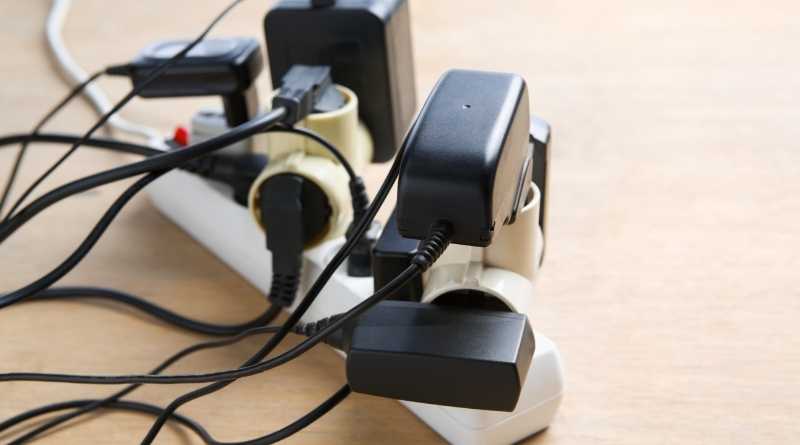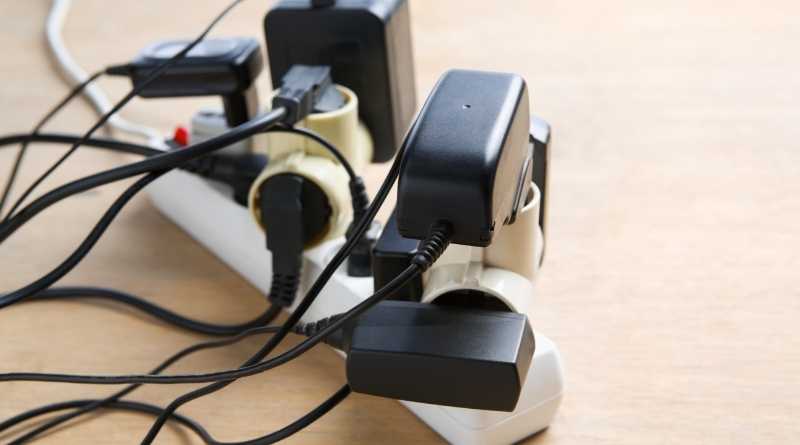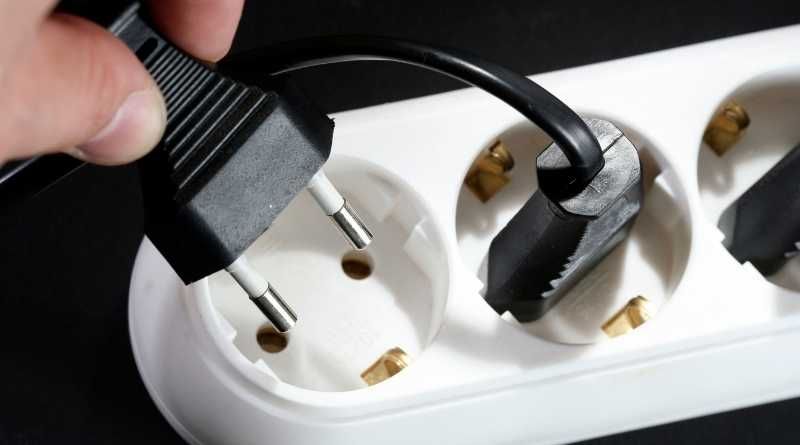The surge protector is the unsung hero of the modern plugged-in household. Without surge protectors, our electronics would be like sitting ducks in a lightning storm.
However, even though surge protectors protect our gadgets from electrical surges, some people have learned that you can overload a surge protector by connecting it to other surge protectors.
If you’re wondering if you can add a surge protector to the end of a line of surge protectors, we answer that question here.
Table of Contents
Is it OK To Connect Two Surge Protectors Together (Daisy Chaining)?
It is not a good idea to plug one surge protector into another. It’s important to understand how surge protectors work because they aren’t always easy to set up. Plugging them in incorrectly can cause fire and burn hazards.
If you piggyback one power strip onto another, you’re creating potential safety hazards. These protective devices are not designed to be plug into one another.
A report from the U.S. Office of Compliance noted that about a quarter of all failures and fires caused by surge protectors occurred due to daisy chains.
Surge protectors with devices plugged into those connectors then fed to a single source at the wall overload the devices, resulting in excess current flowing that can cause a fire or trip the circuit breaker.
Daisy chains overload the surge protection technology, putting your electricals at risk during a power surge (if you use a power strip temporarily, stick with one at a time).

What Is Daisy Chaining?
“Daisy chaining” is a term that comes from telecommunications. It refers to a method of connecting multiple devices to a single wire or port to conserve cable length and to save the cost of additional cables.
Essentially, in the case of surge protectors, it means attaching more than one device to the same power strip. This is often done with computers, but it is not recommended.
In a daisy chain setup, the surge protection device is connected to a power outlet and then one or multiple devices are connected to the surge protector.
This setup is dangerous because if the surge protector fails or is turned off, every device connected to it will be unprotected and may be destroyed by a power surge.
When It’s Okay To Daisy Chain
Despite what many believe, connecting surge protectors and extension cords to one another is not dangerous. Often we have to utilize an extension cord in order to reach distant wall A/C outlets.
Things like fires, electrical power trips etc. don’t really happen, right?
Well, that is true only if certain conditions are met. The conditions vary across countries and cities. Even weather conditions play a role.
If you want to try it at home or at the office, please be aware that there are some risks involved when we daisy chain surge protectors together.
Let’s see when daisy chaining surge protectors and extension cords makes the most sense.
For Temporary Use Only
Some myths are actually not too far off. Even if it is not safe, we need to make compromises now and then. Many times, one cannot use a power strip or surge protector without the help of extensions cords. But you should not do this permanently!
Bad Weather
There’s no doubt about it, electrical usage should be avoided during severe weather. Especially if power surges and spikes are common in a storm, it wouldn’t be a good idea to daisy chain your power strips.
Make sure your electrical appliances or other devices are not plugged into surge protectors or power strips or buy a whole house surge protector. A surge protector will protect your electrical equipment from lightning strikes, which can cause catastrophic damage.
Check Ampacity
You may have to be careful when connecting power strips or extension cords in a chain, so that you don’t overload the main extension cord. Additional extension cords should not exceed the ampacity of the main extension cord, otherwise your plug-in devices might get damaged.
Non-Heavy Appliances Only
As previously said, heavy appliances and devices should not be used when surge protectors are not connected directly to the wall outlet. When surge protector cables are extended, voltage drops and some might not even work.
It is definitely safe to daisy chain surge protectors and extension cords if you know what you’re doing. Most people, however, will NOT know how to calculate ampacity, voltage usage, etc. That’s why it’s considered un-safe.
The above are four conditions that need to be met when daisy-chaining power strips, extension cords, and surge protectors at home. Avoid daisy-chaining whenever possible.
The Dangers Of Daisy Chaining
Unfortunately, a lot of people don’t realize that daisy-chaining surge protectors is a bad thing to do. In fact, it could be doing more harm to their electronics than if they had no surge protector at all.
Here are three reasons why you should AVOID daisy-chain surge protectors:
- 1. It creates a weak point: A surge protector’s main purpose is to divert excess voltage away from the connected devices and send it safely to the ground. This can’t be accomplished when you have multiple surge protectors chained together because the excess voltage has more paths to travel to reach the ground.
Most of the time, this results in voltage finding an alternative path, such as traveling through connected devices and damaging them.
- 2. The downside to this is that if one of your devices malfunctions, it will take all the devices plugged in on the same strip with them.
- 3. It can create a fire hazard: Most of the time, the reason for chaining surge protectors is to connect several devices that require a lot of power. When you daisy-chain several surge protectors together, especially those that are low-quality, they can exceed their maximum current rating.
How Many Devices Can I Plug Into A Surge Protector?
Surge protectors are often misused. When a power surge strikes, a surge protector diverts it to the ground, but if you use more power than the surge protector can handle, it’s possible for the electricity to travel backward through the device, damaging it and preventing it from protecting any other devices plugged into the wall.
But to answer How many devices can you plug into a surge protector. Actually, it’s not the number of devices, but their power consumption. Phone chargers, laptops, televisions, and so on are not power hogs. So you can plug as many devices on a surge protector as long as they are not high power devices.
For example, you should not connect many high-power devices to power strips. Heaters are the worst because they basically just take maximum power and for a long time.
However, you must also make sure that the surge protector is rated for the total amount of power that your devices draw. If you try to plug too many devices into a surge protector that only has the capacity for a certain amount of power, you might cause a fire.
Is It Dangerous To Plug An Extension Cord Into A Surge Protector?
Electrical fires in the United States are a big problem, so it’s worth knowing how to prevent them. If you plug multiple devices into a power strip and then plug the power strip into a surge protector, you can overload the outlet and put yourself and your belongings in danger.
However, the short answer is “No,” you can plug an extension cord into a surge protector, but you’ll need to make sure that the extension cords you’re using are high-quality and can handle the load.
For example, if a certain surge protector has a 14-gauge cord, so you’ll want to get an extension cord that’s of the equal or greater gauge. That way, you won’t put too much voltage through the extension cord and cause a fire hazard.
Conclusions
As we said earlier, it is not a good idea to daisy chain surge protectors and extension cords to one another as there are a certain amount of risks involved. However, if you must do it, there are several safety measures you should take.


